
 |
![]()
|
If you think you can help us, or would like something to add. Don't be shy! Pick one of the following categories (by clicking on the icons): |
|
Q.B.I. Covers
added since April 2025:
11 better and 15 new covers.
The latter corresponding with
the red numbers in
this
list.
Latest additions made on
December 26. 2025: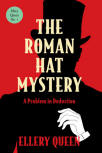 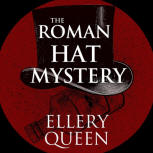 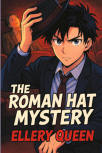 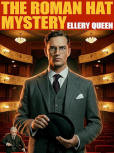 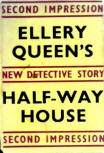 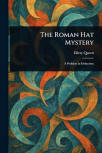 Past additions to the site: April 2024 - April 2025: 17 better and 40 new covers April 2023 - April 2024: 24 better and 17 new covers ... |
|
 |
|
| December 7. 2025 - April 18. 1999 | |
|
The Siamese Twin Mystery (1933) Ellery Queen's seventh novel recounts how Ellery and his father, while returning from vacation, become trapped in a devastating forest fire on Arrow Mountain. Their only refuge is the remote mansion of the renowned surgeon Dr. John Xavier, where an ominous, closed-in atmosphere hangs over everything. The eccentric and secretive residents immediately inspire suspicion, and when Dr. Xavier is murdered—with a torn six of spades in his hand—a complex and deceptive puzzle begins. As the fire encircles the house, strange details emerge, such as a “Thing” Inspector Queen sees but can describe only as a giant crab, and the tangled relationships among the guests who are trapped together. The story departs from strict Golden Age fair play: the situation is only superficially a closed circle, the forest fire mainly serves to heighten tension, and the dying clue forms the centerpiece of the plot’s construction. 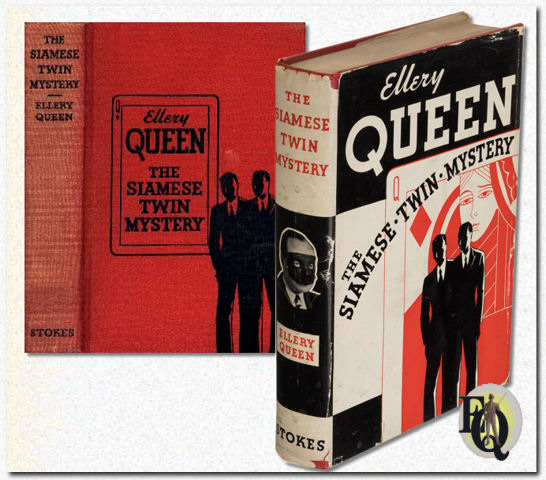 The novel features multiple potential solutions and deliberately misleading clues, a hallmark of the later Queen period in which faulty deductions and planted evidence challenge the reader. The style is at times melodramatic, but it contributes to the intense atmosphere of fear and claustrophobia. In the end, the novel showcases Ellery Queen’s sharp insight, even if the final solution is somewhat more intuitive than strictly logical. The blend of thriller-like elements, a compact mystery, and a carefully crafted dying message makes the book an important and striking entry in the series—more dramatic and story-driven than earlier works, yet still highly compelling for readers who enjoy clever puzzles and a tense, immersive mood. ... Continued here ... |
|
 |
|
| November 16. 2025 | |
Announcer, singer, actor Bert Parks’s rise to fame reads like a classic
American entertainment tale—full of determination, quick wit, improvisation,
and a voice that seemed made for the microphone. Long before millions knew
him as a charismatic quizmaster and the man who would one day serenade Miss
America winners with “There She Is,” Parks made a remarkable
contribution to one of the most celebrated mystery franchises of the
twentieth century: the Ellery Queen drama. His work on that
series showcased not one but two distinct talents—his polished,
authoritative presence as announcer and his lively versatility as actor..jpg) Above: Bert Parks guest-starred in a 1975 Ellery Queen TV series episode "The Adventure of Miss Aggie's Farewell Performance". Seen here with David Wayne (Inspector Queen) and talking to Jim Hutton (Ellery Queen). All of this experience made Parks an ideal match for the world of Ellery Queen. In 1940 he joined the radio series as announcer for the final stretch of its first season. His association with Ellery Queen came full circle in 1975, when Parks appeared in the NBC television adaptation starring Jim Hutton and David Wayne. So decades after his radio work, he returned in a new interpretation of the Queen universe, not as announcer but as on-screen guest star, embodying a character. His appearance offered longtime fans a delightful resonance: a familiar voice from the series’ early years now woven into the visual, modernized version of the great detective’s world. It served as both a nod to the franchise’s legacy and a tribute to Parks’s enduring place in its history. Read his full bio here ... |
|
 |
|
| October 17. 2025 | |
|
Reginald St. George Koury, better and famously
known as "Rex Koury," was born to George Koury (Syrian) and Dora
Mary Cameron (Irish) in Greater
London, England on March 18. 1911. He lived his first two years in Egypt before his parents emigrated to America
aboard the United States Mail Steamer St. Louis from
Southampton and Cherbourg to New York arriving August 16. 1913 settling in Elizabeth, New Jersey. By the age of fourteen, Koury had persuaded the organist at the local Cranford Theater, New Jersey to let him play the movie trailers for free. He also became the organist at St. John's Church in Elisabeth, NJ. During this period he studied with the country's leading theatre organist. His performances were so well received that his duties quickly expanded. From that moment, he resolved to become an organist (1927-29), and at 16 years of age became the youngest professional theatre organist in the country. ... 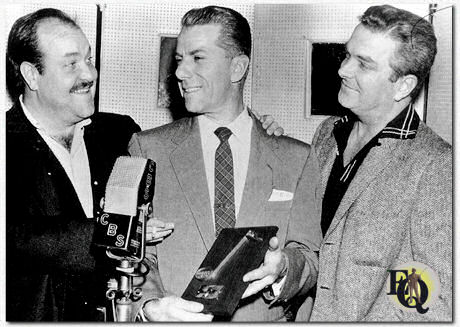 Above: Gunsmoke is an American radio and television Western drama series created by director Norman Macdonnell (R) and writer John Meston. The stories take place in and around Dodge City, Kansas, during the settlement of the American West. The central character is lawman Marshal Matt Dillon, played by William Conrad (L) on radio and James Arness on television. Rex Koury (center) composed the theme. He's seen here receive the "Bud Shank Flute" the DownBeat magazine award. (Feb 2. 1957) In the eighth and final season of the radio series The Adventures of Ellery Queen, (ABC, Nov 27. 1947 - May 27. 1948) he was the organist on duty. Continued here ... |
|
 |
|
| September 28. 2025 | |
The American Gun Mystery (1933) is the sixth
Ellery Queen novel, and one of the author’s most ambitious
experiments in transplanting the Golden Age detective story into an American
setting both vast and theatrical. The novel opens in the New York Colosseum,
a sports arena filled with 20,000 spectators, all gathered to watch Tony
Mars’s spectacular rodeo. Among them sit Inspector Queen, Ellery, and Djuna,
alongside Hollywood actress Mara Gay and Kit Home, the adopted daughter of
Buck Horne, a legendary cowboy shooter attempting a comeback. During the
climactic event, Horne rides into the arena followed by forty other
riders—but there are forty-one instead of forty. At the height of the
synchronized gunfire, Buck suddenly falls dead, shot through the heart
before the eyes of the immense crowd. The impossible crime is immediately
framed: forty-one cowboys, twenty thousand witnesses, and yet no one can
identify the killer.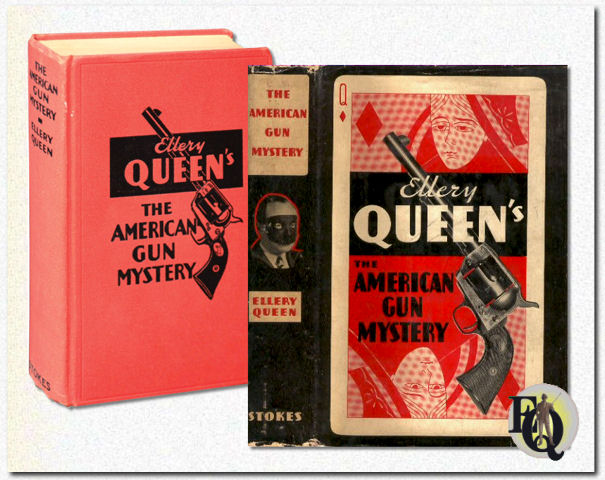 Ellery Queen’s narrative is structured as both puzzle and spectacle. Clues abound: the ridges in a dead man’s belt, the ivory-handled revolver whose “feel” plays a crucial role, the bent locks on a mysterious green box, and the vanishing gun itself—a central device handled with ingenuity (Michael E.Grost). The investigation spans not only the rodeo but the interwoven world of show business, gambling debts, Hollywood connections, and a newsreel scoop of the murder. The mystery becomes more complex when, at the very spot where Buck Horne died, another rider is later shot with the same revolver during a reenactment of the event (Margaret Germond). ... Continued here ... |
|
|
TIP:
Interested readers should know that the
icons/covers of books, used throughout
the website have extra descriptions/information
not included in the text on the same page.
Pointing your cursor at the icon/cover used to
reveal this extra information. To achieve the
same effect
Firefox users can install
an add-on called 'Popup
ALT Attribute'. When installed pointing your cursor at an icon/cover results in showing you the details or additional information. |
|
 |
|
| August 29. 2025 | |
Ellery Queen’s The Egyptian Cross Mystery (1932) is
widely regarded as one of the author’s most bizarre and haunting works, a
novel that even contemporary reviewers called “Ellery Queen’s weirdest
adventure.” The story opens with a macabre discovery in the remote West
Virginia village of Arroyo, where, on Christmas morning, the decapitated
body of an eccentric schoolmaster is found crucified upon a roadside
signpost. His arms are nailed to the crossbar, his ankles to the upright,
the tableau forming a grotesque “T.” The man’s slow-witted servant has
disappeared, and the only other immediate clue is the letter “T” scrawled in
blood on the victim’s own door. From the very first scene, Ellery Queen is
drawn into a crime that seems at once ritualistic, symbolic, and
unfathomably cruel.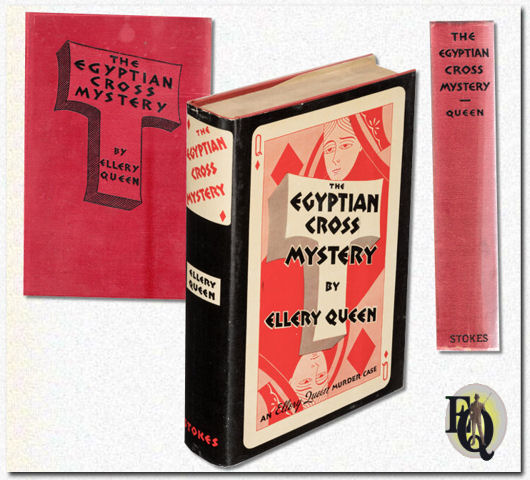 But this is only the beginning. Over the course of the following year, a series of equally brutal killings occurs, each echoing the first: men are murdered, their heads removed, and their bodies crucified in the shape of a “T.” The recurrence of this strange symbol—the crossroads, the signpost, the body itself, all reinforcing the image—suggests a deeper pattern, but the meaning eludes both police and detective alike. Ellery pursues the trail from the rural backwoods of West Virginia to Long Island and New York City, where a wealthy rug importer falls victim to the same fate. His investigation reveals connections not only among the victims, but also to a sun-worshipping nudist cult that seems shadowed by mystery and menace. As the killings continue, it becomes increasingly clear that religious and symbolic elements are central to the murders, but only with the fourth death does Queen grasp the missing clue that allows him to untangle the enigma.. Continued here ... |
|
 |
|
| July 28. 2025 | |
|
Here's a podcast that comes highly recommended: What happens when old time radio dramas clash with a modern day 20-something? No technology, no Starbucks, and no one is PC! Will Madison survive? Follow along as she teams up with radio icons like Sherlock Holmes, Marshal Matt Dillon and Superman. Original radio scripts adapted lovingly to give a funny and modern look at the way things were and the way things are today. All episodes are stand-alone. Start at the beginning, or if you see a title you like, jump in anywhere! Madison on the Air is a scripted comedy podcast that follows the 20-something makeup blogger, Madison Standish, who has been zapped from modern day into old time radio dramas (through some “freaky-deaky science-stuff”… we don’t exactly know how). With a deep love of the genre, Chrisi Talyn Saje adapts original radio drama scripts from the 1930s-1950s to include the fun-loving, mocha latte drinking, guy crazy, woke culture devotee Madison. She may be partnered up with Sherlock Holmes, or Marshal Matt Dillon, donning the tights of Batman’s Boy Wonder, fighting Martians or joining other famous radio icons on their adventures. Each episode features a different radio show. All in fun, Madison serves to highlight the way we were and the way we are today, bringing the lost art form of scripted radio series to modern audiences. No need to know anything about old time radio to appreciate Madison’s adventures. |
|
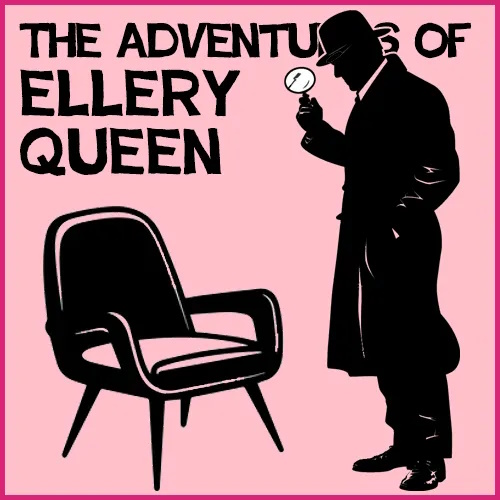 Coming August 1st The Adventures of Ellery Queen "The Adventure of Madison Standish, Suspect" |
|
| Madison takes the train from Chicago to New York to fill in for Nikki Porter, the assistant to Ellery Queen. On the trip, a bank robber corners her in her compartment, demanding that she be a mule for his heist money. But when that robber ends up shot dead, Madison will be on the hook by the police for the murder. And to make things worse, the other robbers from the bank job think she has the missing dough! Can Ellery Queen figure out the truth? Can you? Just as in the original series, we will have a break in the action before the murderer is revealed to have fellow audio drama folks, Shannon Perry, Drew Frohmann and Sarah Golding make their guesses as the “armchair detectives.” | |
|
https://www.madisonontheair.com/elleryqueen58/ Written and Produced by: Chrisi Talyn Saje Audio Engineering and Music Composition by: Jeremy Saje |
|
 |
|
| July 4. 2025 | |
From the very first page, The Greek Coffin Mystery sets a somber
and intriguing tone. The case begins with the death of Georg Khalkis, a
wealthy, internationally renowned art dealer. His passing seems
straightforward - heart failure - until his will mysteriously vanishes after
the funeral. This puzzling development brings in Inspector Richard Queen and
his son, Ellery Queen, whose keen analytical mind will soon
be tested as never before.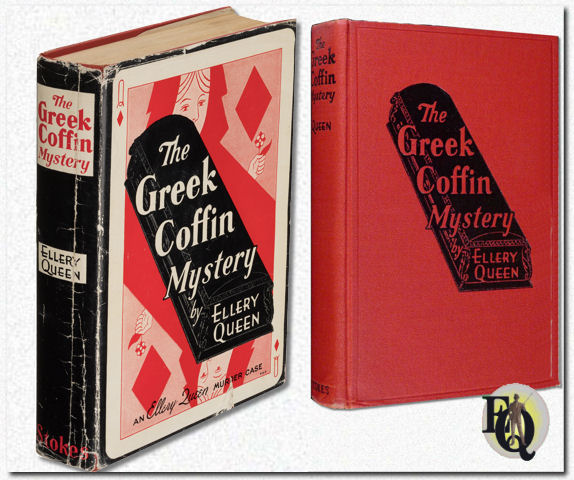 When the Queens are called in to assist, Ellery makes a daring suggestion: the one place yet unsearched for the missing will is the coffin itself. The decision to exhume Khalkis’s body unearths more than anyone expects — the coffin contains not one body, but two. This shocking discovery ignites a complex and twisting investigation that spirals into one of Ellery Queen’s most formidable and mind-bending cases. What follows is a detective story of rare depth and structure. Unlike conventional mysteries that build toward a single resolution, The Greek Coffin Mystery boldly offers four separate solutions, each culminating a distinct phase of the novel. These aren't arbitrary twists - they serve as an evolving framework that mirrors the very nature of scientific reasoning: observation, hypothesis, revision, and final synthesis. Michael E. Grost aptly compared Queen’s method to that of Newton building upon Kepler and Tycho Brahe - a layering of rational thought that leads, finally, to truth. The ingenuity of this structure elevates The Greek Coffin Mystery to a high point in detective fiction. The final solution is startling - so much so that some readers, ... Continue here ... |
|
 |
|
| May 17. 2025 | |
Ellery Queen’s The Dutch Shoe Mystery
(1931) is the third and last of his apprentice works, and it firmly establishes Queen as
a master of the classical detective puzzle. What begins as a straightforward
hospital drama soon spirals into an intricate mystery that delivers both
intellectual satisfaction and the eerie, otherworldly touch that marks the
best of Queen’s early work.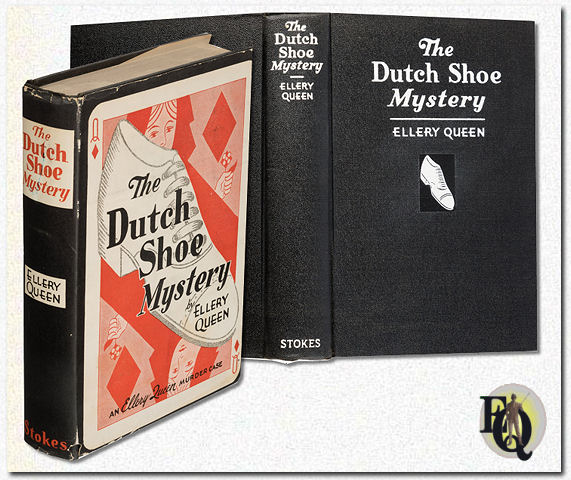 The story opens in the sterile, white corridors of the Dutch Memorial Hospital—a setting that provides much more than a backdrop. It becomes a symbolic space of order, rationality, and, paradoxically, hidden chaos. When Abigail Doorn, a wealthy philanthropist and one of the richest women in America, is wheeled into the operating room for a delicate surgery, everyone present is stunned to discover that she is already dead—strangled with wire moments before the procedure. The operating theater, about to witness a life-saving miracle, instead hosts a murder scene. Ellery Queen, present by coincidence while visiting a friend, takes the reins of the investigation, diving headfirst into a mystery steeped in motive, opportunity, and psychological complexity. Michael E. Grost explained that the brilliance of The Dutch Shoe Mystery lies in its opening chapters. The initial ten chapters are particularly taut, delivering not just the central murder, but a vibrant cast of suspects, a compelling floor plan (a hallmark of Golden Age detective fiction), and Queen’s meticulous style of deduction. Queen’s surrealistic flair is evident in the startling presentation of the corpse and the all-encompassing whiteness of the hospital setting. The atmosphere becomes almost abstract, evoking images of Malevitch’s ** White on White and suggesting a visual metaphor of purity invaded by violence. This “white-out” motif lends the novel a visionary quality that is rare among even the most imaginative detective stories. ... Continue here ... |
|
A challenge to the reader: if you think you
could add additional information (even
corrections) please do so...
 You can reach us by clicking
the "Uncle Sam" icon (right).
We've always appreciate
corrections and additional information, however
small the detail may be... You can reach us by clicking
the "Uncle Sam" icon (right).
We've always appreciate
corrections and additional information, however
small the detail may be... |
|
 |
|
| May 7. 2025 | |
| Two teenagers, a shared passion for mysteries, and a dream that began in the halls of a Pennsylvania high school: that’s how the extraordinary writing duo William Link and Richard Levinson got their start. What began with magic tricks and co-written detective stories evolved into a legendary partnership that would redefine the foundations of American television drama. | |
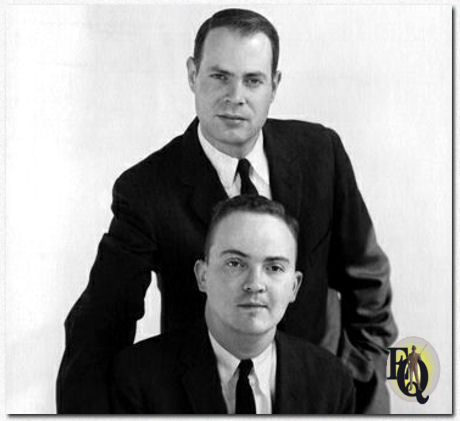 |
|
|
From their first creative steps at the Wharton School—where they secretly wrote plays while officially studying business—to winning prestigious honors like the Golden Globe and the Edgar Award, their friendship remained the driving force behind their success. They brought iconic characters to life, including the unforgettable Columbo, and helped shape groundbreaking television moments such as That Certain Summer, the first Emmy-winning program to address homosexuality on American TV. Their love of the mystery genre also took form in their creation of the unique television version of Ellery Queen (NBC, 1975 – 1976), in which they gave the classic detective tale an innovative twist: the viewer was invited to solve the mystery themselves. Although the series lasted only one season, it was later seen as a cult classic and a respected reinterpretation of the literary icon. |
|
|
Behind the scenes, their careers were infused with innovation, humor, and a deep love of storytelling. They wrote, produced, and directed with flair, captivating audiences for decades. Levinson’s death in 1987 broke Link’s heart, but he channeled that grief into storytelling—driven by the feeling that his friend was still looking over his shoulder. This two-part biography offers a compelling look behind the scenes of television’s golden age, told through the lives of two men whose paths were forever intertwined. Click their photos right to keep reading... |
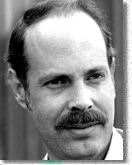 Richard Levinson  William Link |
 |
|
| April 26. 2025 | |
|
We've just passed our 26th year online! To celebrate an update on of almost
everyone's favorite character: Nikki Porter! In the multifaceted world of Ellery Queen, no female character has intrigued readers and listeners quite like Nikki Porter. Originally created for the radio dramas, Nikki’s role quickly expanded, though her core remained most strongly tied to the medium where she was born. While her appearances in films, short stories, and novels cannot be ignored, it was on the airwaves that she came into her own—her voice, quite literally, giving color and warmth to the cerebral world of Ellery Queen. From a radio production standpoint, casting a female lead was practical due to the tonal contrast a woman’s voice offered, but it also opened the door to romantic dynamics that further humanized Ellery. The mystery of Nikki Porter, however, lies not just in her fictional adventures but in her shifting identity across different formats. Every time we meet her, Nikki’s appearance and background seem to change: in one version, she’s a pert blonde; in another, a red-haired secretary from West 94th Street; and in yet another, a wealthy young woman originally named Sheila Potts or Sheila Brent. Despite these discrepancies, one thing remains constant—her charming presence and the subtle tension of her relationship with Ellery. It's an "amazing" trait of the Queen universe that Nikki meets Ellery in no fewer than four different ways, depending on the source—books, radio, or film. This narrative flexibility may have been deliberate, as it added freshness and romantic suspense to their evolving connection. ... Continued here... |
|
 |
|
| April 1. 2025 | |
 After
serving as managing editor for both Ellery Queen’s
Mystery Magazine (EQMM) and Alfred Hitchcock’s Mystery
Magazine, Jackie Sherbow is stepping into a new role as EQMM’s
editor (Jan 2025). She becomes only the fourth
person to hold this position in the magazine’s nearly eighty-five-year
history, following in the footsteps of Frederic Dannay, Eleanor Sullivan,
and Janet Hutchings. After
serving as managing editor for both Ellery Queen’s
Mystery Magazine (EQMM) and Alfred Hitchcock’s Mystery
Magazine, Jackie Sherbow is stepping into a new role as EQMM’s
editor (Jan 2025). She becomes only the fourth
person to hold this position in the magazine’s nearly eighty-five-year
history, following in the footsteps of Frederic Dannay, Eleanor Sullivan,
and Janet Hutchings.Sherbow brings a deep appreciation for EQMM’s legacy and a strong connection to its readership, having worked closely with the magazine’s community over the past fifteen years. As she takes on this new responsibility, she is committed to upholding EQMM’s core mission—publishing the best in detective and crime short fiction, championing both established and emerging writers, and maintaining the magazine’s tradition of literary excellence. With EQMM now part of the newly formed publishing group 1 Paragraph, Sherbow looks forward to leading the magazine into an exciting new chapter, embracing change while honoring its rich history. She remains dedicated to bringing readers the high-quality mystery fiction they have come to expect, ensuring that EQMM continues to be a vital and dynamic publication for years to come. More on EQMM's history here... |
|
 |
|
| March 25. 2025 | |
|
For many of our readers, their
fascination with Ellery
Queen either began or
grew with NBC's TV series
Ellery Queen.
We've now added a
dedicated page for the
actors and crew involved in the
TV series. Some of the profiles
were available earlier but are
now brought together in a
"reunion" page. Profiles
will be added in the future... Starting with the actors who shaped 3 added characters all sprung from the minds of Levinson and Link! |
|
| John Hillerman (Dec 20. 1932 - Nov 9. 2017) imperiously nailed the role of radio detective Simon Brimmer, which was the creation of producers Levinson and Link, and very much became an integral part in the success of the series. Every one of these episodes amounted to a mental duel between the two. And Brimmer always lost. ... (click on picture for more) |
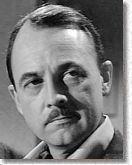 John Hillerman |
| Ken Swofford ( Jul 25. 1933 - Nov 1. 2018), frequently appeared as pugnacious journalist Frank Flannigan in "Ellery Queen" was also a creation of producers Levinson and Link. Swofford said in a 1975 interview, “They tell me I'll be on the show more often. If the show is picked up.” ... (click on picture for more) |
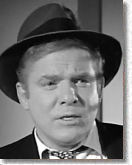 Ken Swofford |
|
Arch Johnson
( Mar 14. 1922 - Oct 9. 1997). It might surprise some of you to hear there was another recurring character in the series: Deputy Commissioner Hayes. Played by veteran actor Arch Johnson he was in at least 3 episodes. ... (click on picture for more) |
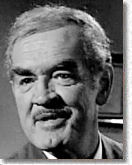 Arch Johnson |

     |
|
Recommended
|
 |

|
|
|
Introduction |
Floor Plan | Q.B.I. |
List of Suspects | Whodunit?
| Q.E.D. | Kill as
directed | New |
Copyright Copyright © MCMXCIX-MMXXV Ellery Queen, a website on deduction. All rights reserved. |